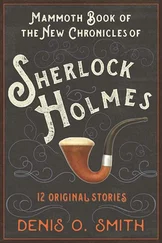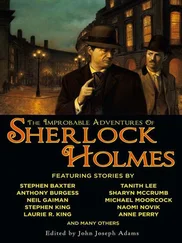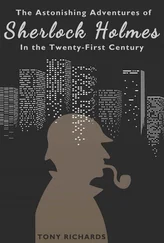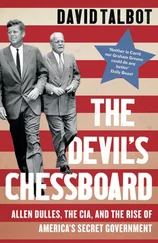His conscience eventually began pricking him. “One day, you wonder, What the hell am I doing?” he recalls. He left the defense industry, and went on to invent the Mylar balloon, an improved version of Liquid Paper, and Kinepak, a kind of explosive that reduces the risk of accidental detonation. Because of his extraordinary knowledge of fire and explosives, companies in civil litigation frequently sought his help in determining the cause of a blaze. By the nineties, Hurst had begun devoting significant time to criminal-arson cases, and, as he was exposed to the methods of local and state fire investigators, he was shocked by what he saw.
Many arson investigators, it turned out, had only a high-school education. In most states, in order to be certified, investigators had to take a forty-hour course on fire investigation, and pass a written exam. Often, the bulk of an investigator’s training came on the job, learning from “old-timers” in the field, who passed down a body of wisdom about the telltale signs of arson, even though a study in 1977 warned that there was nothing in “the scientific literature to substantiate their validity.”
In 1992, the National Fire Protection Association, which promotes fire prevention and safety, published its first scientifically based guidelines to arson investigation. Still, many arson investigators believed that what they did was more an art than a science—a blend of experience and intuition. In 1997, the International Association of Arson Investigators filed a legal brief arguing that arson sleuths should not be bound by a 1993 Supreme Court decision requiring experts who testified at trials to adhere to the scientific method. What arson sleuths did, the brief claimed, was “less scientific.” By 2000, after the courts had rejected such claims, arson investigators increasingly recognized the scientific method, but there remained great variance in the field, with many practitioners still relying on the unverified techniques that had been used for generations. “People investigated fire largely with a flat-earth approach,” Hurst told me. “It looks like arson—therefore, it’s arson.” He went on, “My view is you have to have a scientific basis. Otherwise, it’s no different than witch-hunting.”
In 1998, Hurst investigated the case of a woman from North Carolina named Terri Hinson, who was charged with setting a fire that killed her seventeen-month-old son, and faced the death penalty. Hurst ran a series of experiments re-creating the conditions of the fire, which suggested that it had not been arson, as the investigators had claimed; rather, it had started accidentally, from a faulty electrical wire in the attic. Because of this research, Hinson was freed. John Lentini, a fire expert and the author of a leading scientific textbook on arson, describes Hurst as “brilliant.” A Texas prosecutor once told the Chicago Tribune , of Hurst, “If he says it was an arson fire, then it was. If he says it wasn’t, then it wasn’t.”
Hurst’s patents yielded considerable royalties, and he could afford to work pro bono on an arson case for months, even years. But he received the files on Willingham’s case only a few weeks before Willingham was scheduled to be executed. As Hurst looked through the case records, a statement by Manuel Vasquez, the state deputy fire marshal, jumped out at him. Vasquez had testified that, of the roughly twelve hundred to fifteen hundred fires he had investigated, “most all of them” were arson. This was an oddly high estimate; the Texas State Fire Marshals Office typically found arson in only fifty per cent of its cases.
Hurst was also struck by Vasquez’s claim that the Willingham blaze had “burned fast and hot” because of a liquid accelerant. The notion that a flammable or combustible liquid caused flames to reach higher temperatures had been repeated in court by arson sleuths for decades. Yet the theory was nonsense: experiments have proved that wood and gasoline-fuelled fires burn at essentially the same temperature.
Vasquez and Fogg had cited as proof of arson the fact that the front door’s aluminum threshold had melted. “The only thing that can cause that to react is an accelerant,” Vasquez said. Hurst was incredulous. A natural-wood fire can reach temperatures as high as two thousand degrees Fahrenheit—far hotter than the melting point for aluminum alloys, which ranges from a thousand to twelve hundred degrees. And, like many other investigators, Vasquez and Fogg mistakenly assumed that wood charring beneath the aluminum threshold was evidence that, as Vasquez put it, “a liquid accelerant flowed underneath and burned.” Hurst had conducted myriad experiments showing that such charring was caused simply by the aluminum conducting so much heat. In fact, when liquid accelerant is poured under a threshold a fire will extinguish, because of a lack of oxygen. (Other scientists had reached the same conclusion.) “Liquid accelerants can no more burn under an aluminum threshold than can grease burn in a skillet even with a loose-fitting lid,” Hurst declared in his report on the Willingham case.
Hurst then examined Fogg and Vasquez’s claim that the “brown stains” on Willingham’s front porch were evidence of “liquid accelerant,” which had not had time to soak into the concrete. Hurst had previously performed a test in his garage, in which he poured charcoal-lighter fluid on the concrete floor, and lit it. When the fire went out, there were no brown stains, only smudges of soot. Hurst had run the same experiment many times, with different kinds of liquid accelerants, and the result was always the same. Brown stains were common in fires; they were usually composed of rust or gunk from charred debris that had mixed with water from fire hoses.
Another crucial piece of evidence implicating Willingham was the “crazed glass” that Vasquez had attributed to the rapid heating from a fire fuelled with liquid accelerant. Yet, in November of 1991, a team of fire investigators had inspected fifty houses in the hills of Oakland, California, which had been ravaged by brush fires. In a dozen houses, the investigators discovered crazed glass, even though a liquid accelerant had not been used. Most of these houses were on the outskirts of the blaze, where firefighters had shot streams of water; as the investigators later wrote in a published study, they theorized that the fracturing had been induced by rapid cooling, rather than by sudden heating—thermal shock had caused the glass to contract so quickly that it settled disjointedly. The investigators then tested this hypothesis in a laboratory. When they heated glass, nothing happened. But each time they applied water to the heated glass the intricate patterns appeared. Hurst had seen the same phenomenon when he had blowtorched and cooled glass during his research at Cambridge. In his report, Hurst wrote that Vasquez and Fogg’s notion of crazed glass was no more than an “old wives’ tale.”
Hurst then confronted some of the most devastating arson evidence against Willingham: the burn trailer, the pour patterns and puddle configurations, the V-shape and other burn marks indicating that the fire had multiple points of origin, the burning underneath the children’s beds. There was also the positive test for mineral spirits by the front door, and Willingham’s seemingly implausible story that he had run out of the house without burning his bare feet.
As Hurst read through more of the files, he noticed that Willingham and his neighbors had described the windows in the front of the house suddenly exploding and flames roaring forth. It was then that Hurst thought of the legendary Lime Street Fire, one of the most pivotal in the history of arson investigation.
On the evening of October 15, 1990, a thirty-five-year-old man named Gerald Wayne Lewis was found standing in front of his house on Lime Street in Jacksonville, Florida, holding his three-year-old son. His two-story wood-frame home was engulfed in flames. By the time the fire had been extinguished, six people were dead, including Lewis’s wife. Lewis said that he had rescued his son but was unable to get to the others, who were upstairs.
Читать дальше











